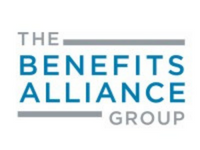As of December 18, 2022, the federal government has extended the length of time that individuals can access employment insurance (EI) sickness benefits. The total period of coverage available is now 26 weeks, up from 15 weeks.
On the surface, this announcement should be positive news for employers and employees across the board. However, the actual effects of this change could vary.
IMPACT ON EMPLOYEES WITHOUT DISABILITY BENEFITS
The EI coverage extension is certainly valuable for lower-income employees without disability benefits. “For these employees, such as general labourers and people with casual jobs, this is clearly better. But really that’s the only case where this change is favourable,” says Martin Papillon, president and CEO of AGA Benefits Solution.
IMPACT ON EMPLOYEES WITH WORKPLACE SHORT-TERM DISABILITY (STD) BENEFITS
Whether these benefits are provided through salary continuation or insurance administered by a third party, employees with STD benefits are disqualified from receiving EI. However, private STD benefits are generally more robust than the federally funded EI.
Plan sponsors with STD benefits should consult with their Group Benefits Advisors. While employees with STD are not directly affected by the EI change, it is not clear whether the new 26-week benefit period will have an impact on requirements for the EI premium reduction program for plan sponsors.
IMPACT ON EMPLOYEES WITH LONG-TERM DISABILITY (LTD) BENEFITS BUT NO SHORT-TERM DISABILITY (STD) BENEFITS
Workers that fall under this category could wind up losing out if employers automatically adjust their LTD to begin at 27 weeks, after the extended EI coverage ends. Why? The EI benefit pays 55 percent of earnings up to a maximum taxable amount of $638 a week. LTD benefits, on the other hand, typically pay up to 67 percent of earnings, with higher weekly maximums and are not usually taxed.
“Twenty-six weeks is a long time for an employee to live on only 55 percent of earnings. This may lead to the employee drawing on savings, borrowing money or remortgaging their home to make ends meet,” says Sabat.
The resulting financial pressure could exacerbate health problems and cause additional illnesses, such as depression. An employee in this situation is even more likely to go on long-term disability and never return to work, especially since EI does not provide case management support (unlike STD and LTD benefits). “For six months the employee does not get help with treatment options and the return to work will be much harder,” explains Sabat.
What does this mean for employers?
From the employer's perspective, any savings reaped might be short-lived. “Some insurers have said that if the waiting period for LTD is extended to start after the 26 weeks of EI coverage, they may reduce rates a bit. But the number of LTD claims may increase due to the lack of medical management and support during the EI benefit period,” notes Sabat.
“At first plan sponsors may think this is great because they don’t have to pay LTD for another 11 weeks. But that means another 11 weeks at $638 for employees. Is that what you really want as an employer?” asks Papillon. “It’s a tight employment market, you’re trying to recruit people, and suddenly your LTD program is really unattractive.”
WHAT SHOULD EMPLOYERS DO?
Employers that determine the extended EI coverage is not in the best interests of their employees and their organizations have two primary options:
1- Maintain the status quo.
Keep the current waiting period for LTD at 16 or 17 weeks. This is the easiest option for employers to avoid the potential adverse effects of the EI extension. In this case, however, employees are responsible themselves for reporting to EI when they begin receiving LTD benefits, as they are not allowed to receive EI and LTD benefits at the same time.
2- Top up the EI coverage.
Implement a supplementary unemployment benefit (SUB) plan available through the EI program. “The advantage here is that the employer can provide the rather inexpensive SUB plan for the full duration of the new EI benefit and extend the LTD waiting period accordingly, which should result in a premium rate reduction,” says Papillon. Sabat adds, “If you go ahead with a top-up, we strongly recommend hiring a third-party administrator as well to handle the adjudication of EI claims and provide case management that supports a successful return to work. In the long run that’s more affordable than having more employees go on long-term disability.”
“Employers should not rush into making fundamental changes in their income replacement strategy. You can take the time to review your current plan and goals with a trusted benefits advisor, then plan for changes if required by the next renewal date of your group insurance contract,” advises Papillon. “This will allow plan sponsors to make informed decisions that support their global HR strategy, and to plan for proper employee communication and support regarding plan changes, if any,” he adds.
This content is powered by the Benefits Alliance Group.
CapriCMW is a proud member of the Benefits Alliance Group, a national organization consisting of 28 independent firms with more than 200 advisors. Collectively, we administer over 8,000 employee benefit plans with $1.4 billion of group insurance premiums, as well as 1,500 group retirement plans that have over $3.5 billion in plan assets. Learn more at benefitsalliance.ca.


